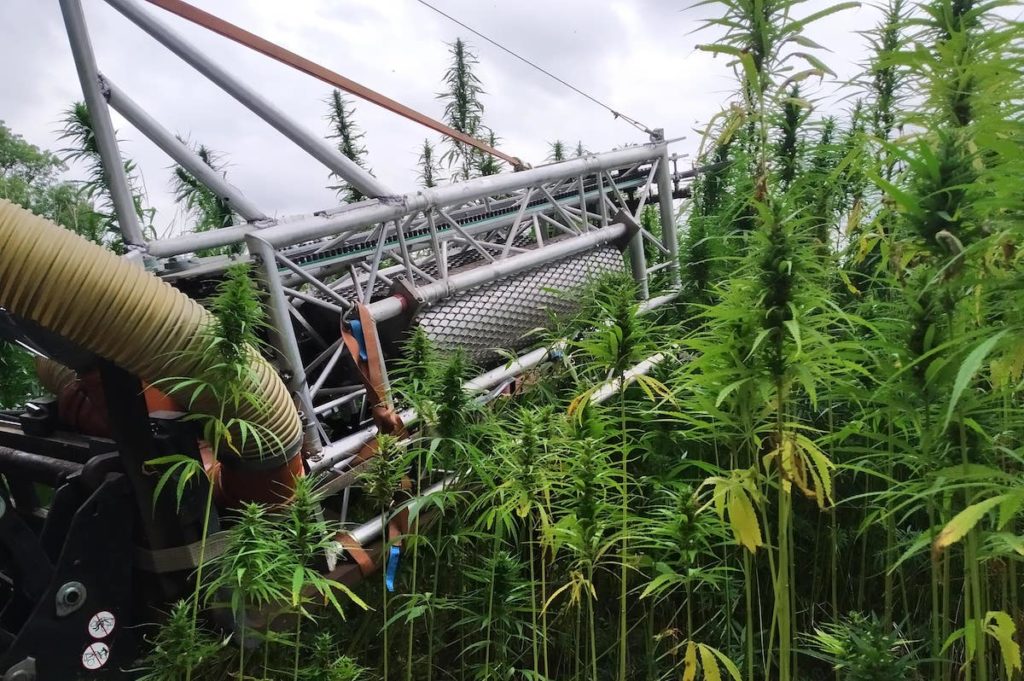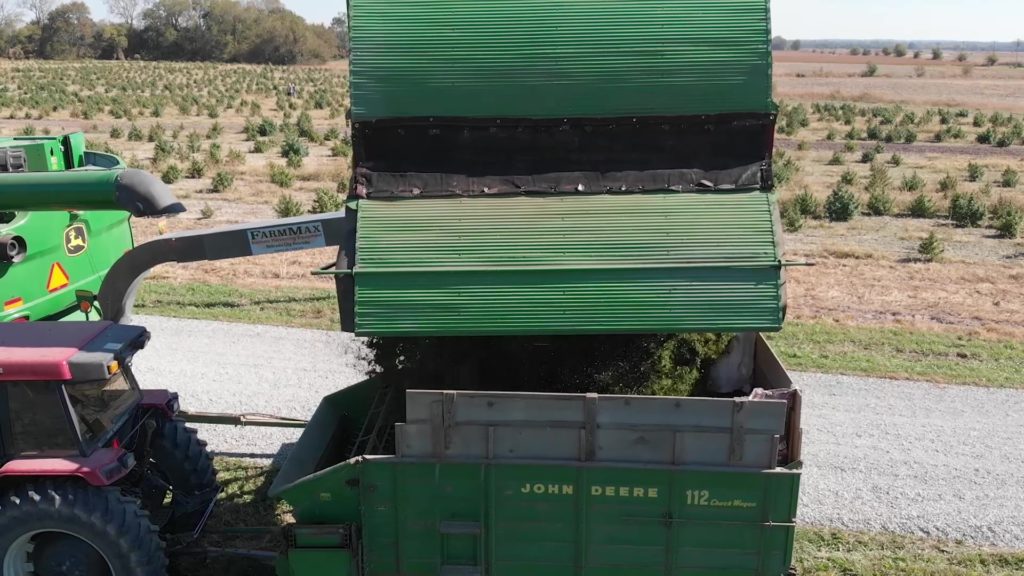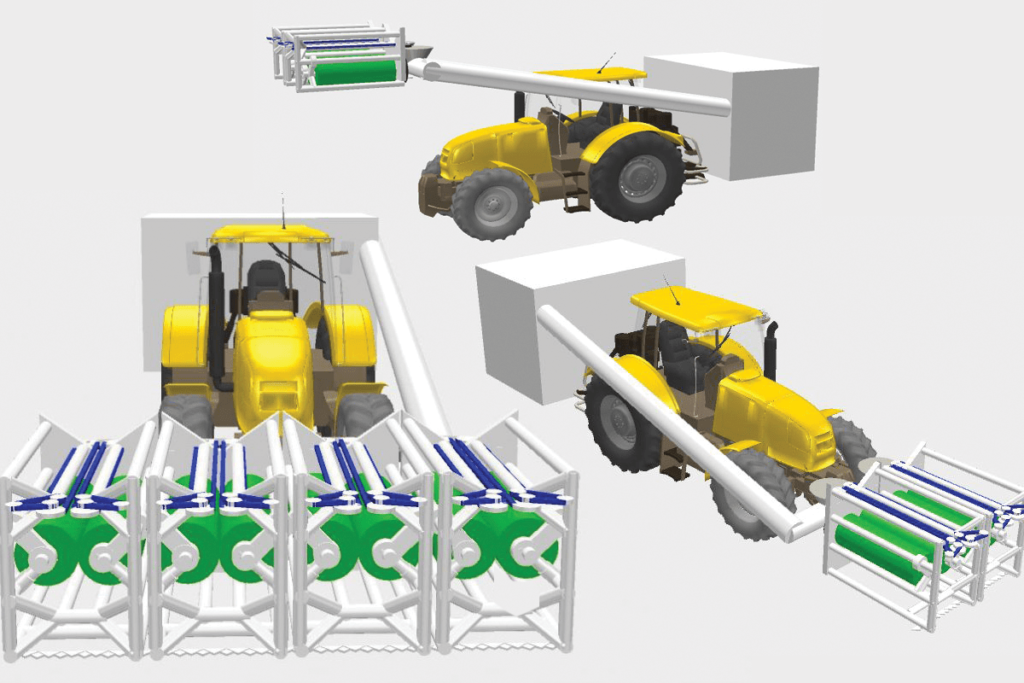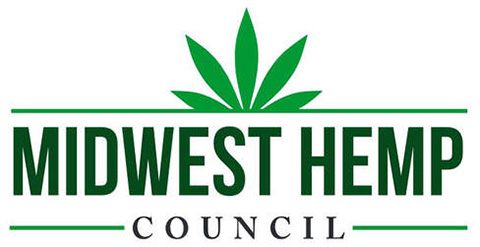
Hemp, including that grown for its CBD-rich flowers, has strong and resilient stalks. While that strength is a plus for hemp’s industrial uses, it can create issues at harvest for cultivators seeking to produce high-CBD smokable flower or biomass for processing. A Pennsylvania hemp grower told Hemp Benchmarks in the summer of 2019, “I’ve personally burned up three combines in the last three-and-a-half to five years, processing ripe material.”
Farmers seeking to preserve hemp flowers to sell as a smokable product typically need to hire manual labor to hand-harvest their plants. Hand-cutting is especially important to protect not only the flowers, but also their trichomes: small, sticky, glandular outgrowths that cover hemp flowers and contain much of the plant’s cannabinoids and terpenes.
Meanwhile, many of those growing high-CBD varieties for processing into extracts and other products have taken to grinding up entire plants – flowers, leaves, stalks, and all. Although more efficient than hand-harvesting, this practice lowers the cannabinoid potency of the resulting biomass.
Both approaches are necessitated by the lack of specialized hemp harvesting equipment available currently, and neither is ideal. Our Hemp Benchmarks price assessments have shown that smokable CBD flower typically fetches significantly higher per-pound prices compared to CBD biomass, but hand-harvesting is expensive and time-consuming. Biomass producers, on the other hand, could demand higher prices for their crops if they could easily separate the cannabinoid-rich flowers and surrounding leaves from fan leaves and stalks.
Technology may now be catching up to the painstaking task of harvesting CBD-rich hemp. Agricultural engineers in the U.S. and Europe have recently debuted practicable mechanical hemp harvesters that can reportedly handle hemp flower safely, and in a quick and cost-efficient manner.
Working with Existing Combines

In Nebraska, a small company has created hemp harvesting technology for the plant’s flowers, seed, and stalks. FarmMax was started by a pair of brothers, Ty and Jay Stukenholtz, who were later joined in the business by Ty’s wife, Beth. The brothers both studied agricultural engineering at the University of Nebraska. Previously, they designed harvesting equipment for specialized seed companies, as well as for firms harvesting corn cobs for biofuels and biochemicals.
Starting five years ago, Ty told Hemp Benchmarks, the company worked to “understand the physiology of the [hemp] plant” while coming up with a hemp harvester that would make such work easier, faster, and more efficient for farmers. Working with a grant they received last year from Nebraska’s Department of Economic Development, the Stukenholtzes designed the Interceptor hemp harvester. The device, which became available in May, attaches to existing mass-produced combines and is currently designed to work with John Deere S Series models.
According to Ty, the Interceptor uses the mechanisms inside those combines to capture and separate the hemp flower – as well as the flower’s trichome-rich dust – from the plant’s seed and stem. “Because the flower material has such fine dust in it, it’s designed to collect that,” he said, “whereas a normal combine, you’d tend to blow out the flower material and you can’t with the Interceptor. The stem is basically thrashed and put back on the ground.”
Stukenholtz said that since the Interceptor is designed for farms with combines, it is not necessarily a good fit for smaller hemp cultivators. The company is preparing to sell its first Interceptor in the next several weeks, for use in the upcoming harvest. They have also been getting calls from hemp cultivators in Colorado, Montana, Illinois, and Canada.
From Europe, Innovations for Small Farmers

In Europe – where hemp farming has been ongoing for longer than in the U.S., but has traditionally focused primarily on industrial uses – there is significant competition for new technologies that assist cultivators with their work, especially as interest in CBD grows. In June, the European Industrial Hemp Association (EIHA) announced Henry’s Hemp Harvester, a German company, as the winner of its ‘Hemp Product of the Year 2020’ innovation award.
Company CEO Heinrich Wieker said his harvester was the result of four years of research, development, and production. The critical difference between hemp and other crops, he said, is its fiber. “It is so strong that it easily blocks large machines and [it is important] to avoid any rotating parts near the stems,” Wieker wrote in an email to Hemp Benchmarks. “My main focus at the harvest [was] always the flowers and I figured out a technique to imitate the hand-strip-move with thumbnail and index-finger.”
As described in the EIHA press release, Henry’s hemp harvester is a “double-module front-loaded attachment for harvesting industrial hemp flowers and stems,” and is especially designed for small farms. The company website, meanwhile, says a patented mechanism “gently strips the plant’s flowers and severs the stems in one pass,” allowing a harvesting rate of 1.2 acres (0.5 hectares) per hour. The harvester uses aluminum parts for weight reduction and can be driven by a small tractor.
Wieker said the first four of his machines will be delivered to European customers this summer. In the interim he is looking for a North American partner, with plans to have his machines on sale in the U.S. and Canada next year. His harvester, he added, creates an opportunity for “beginners, expanders and [those trying] to harvest hemp flowers efficiently with an affordable machine. I see a big potential at small hemp farms. They passionately create a diversity of beautiful products, adapt to the market and contribute a lot to the popularity and the acceptance of hemp.”



